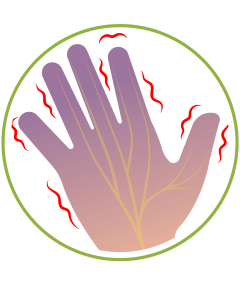
Carpal Tunnel Syndrome (CTS) is a common condition that affects thousands of people every year, especially those who spend long hours typing, using a mouse, or doing repetitive hand movements. If you’re experiencing tingling, numbness, or weakness in your hand or wrist, physiotherapy may be one of the most effective, non-invasive ways to manage symptoms and restore function.
What Is Carpal Tunnel Syndrome?
Carpal Tunnel Syndrome happens when the median nerve—running through a small passage in your wrist called the carpal tunnel—becomes compressed. This pressure can lead to pain, numbness, and weakness in the hand, wrist, and forearm. Left untreated, CTS can interfere with work, daily activities, and overall quality of life.
How Physiotherapy Helps Carpal Tunnel Syndrome
Physiotherapy focuses on reducing pain, improving mobility, and restoring strength in the affected area. With a personalized treatment plan, a physiotherapist can help you:
-
Relieve Nerve Pressure – Gentle manual therapy techniques and stretches help reduce tightness and improve wrist mobility.
-
Improve Posture & Ergonomics – Poor posture and repetitive strain often worsen CTS. Physiotherapists provide education and ergonomic adjustments to protect your wrists at work and home.
-
Strengthen Muscles – Specific exercises build strength in the wrist, hand, and forearm to improve function and reduce strain.
-
Reduce Pain & Inflammation – Modalities such as ultrasound therapy, cold/heat therapy, or laser therapy may be used to calm irritated tissues.
-
Promote Long-Term Recovery – Preventative strategies reduce the risk of symptoms returning, helping you maintain mobility and comfort.
What to Expect During Physiotherapy Treatment
Your physiotherapy session will begin with a thorough assessment of your wrist, hand, and overall posture. Based on your needs, your therapist may use:
-
Stretching and mobility exercises for the wrist and fingers
-
Strength training for supporting muscles
-
Manual therapy to release tension and improve nerve mobility
-
Education on wrist-friendly workstations and daily activities
-
Home exercise programs to support recovery between visits
Benefits of Physiotherapy for Carpal Tunnel Syndrome
-
Non-invasive alternative to surgery
-
Reduces pain and numbness naturally
-
Improves strength and mobility
-
Helps restore function in daily tasks
-
Prevents flare-ups and chronic symptoms
When to Seek Help
If you’re noticing persistent wrist pain, tingling, or weakness, don’t wait until symptoms worsen. Early physiotherapy intervention can prevent long-term nerve damage and improve recovery outcomes. Contact Laurelwood Chiropractic Wellness Centre | (519) 883-4188
